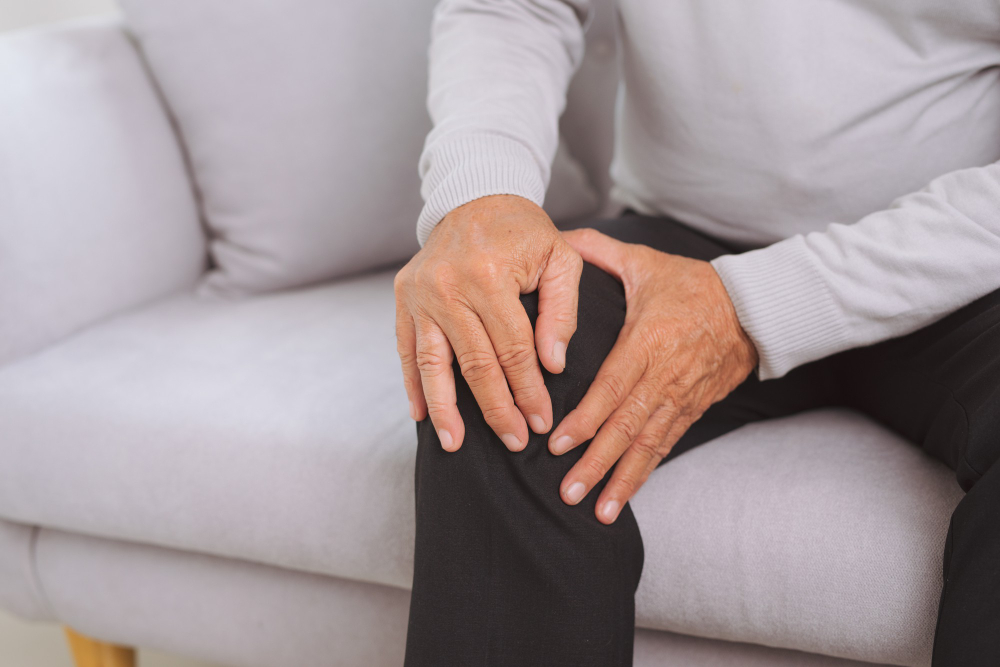General Health Tips & News
What Is Osteoarthritis And What Are The Risk Factors?
By H.S. (staff writer) , published on October 14, 2021

Medicine Telehealth Health
Osteoarthritis is one of the most common yet painful forms of arthritis that gets worse over time if not effectively treated. People with osteoarthritis have to constantly depend on analgesics to get relief from pain. The risk of developing OA increases with age. OA primarily affects older people, but people in their 20s and 30s can also get OA.
What Is Osteoarthritis (OA)?
Osteoarthritis is a degenerative joint condition that affects those joints which bear the most weight, such as the knee, feet, hands, spine, and hips joints. Osteoarthritis is also known as wear and tear arthritis that affects millions of people across the world.
A joint attaches two bones together. The ends of the bones are cushioned by a protective tissue called cartilage, which acts as a "shock absorber" to prevent friction in the joints and supports the movement of bones against each other. OA causes the cartilage to lose its elasticity and become stiff. With time, the cartilage starts deteriorating, causing the bones to rub against each other within the joint. This results in stiffness of the joints, swelling, and pain [1].
What Are The Causes Of Osteoarthritis?
Joint damage is the most common cause of osteoarthritis. Natural aging of the joint causes the cartilage to degenerate, resulting in its total loss. As one of the primary causes of joint damage is pain, it may lead to osteoarthritis. The older you are, the more chances of joint damage and osteoarthritis. Some other causes of joint damage include:
● Ligament injuries
● Dislocated joints
● Torn cartilage
● Poor posture
● Joint malformation [2]
Symptoms Of Osteoarthritis:
Patients with osteoarthritis report the following symptoms:
● Pain: Joints may hurt after moving or long periods of inactivity.
● Swelling: The tissue around the joints is inflamed, resulting in joint swelling.
● Loss of flexibility: The joint becomes unable to move in its full range of motion.
● Bone spurs: Bony enlargements or hard lumps around the affected joints.
● Stiffness: Stiffness of the joints after remaining active for a longer time or upon awakening.
● Tenderness: Whenever you put light pressure on or near the joint, you feel your joints to be tender.
● Decreased range of motion: Stiffness and pain in the joints make it hard to remain physically active. A reduced range of motion makes it hard for you to enjoy day-to-day activities [3].
Are There Any Risk Factors Behind Osteoarthritis?
There are a number of factors that may increase the prevalence of osteoarthritis:
-
Obesity: The more you're overweight, the more you're at risk of osteoarthritis of the spine, hip, and knee. Having extra body weight puts pressure on weight-bearing joints, leading to decreased movement of joints. More pressure on joints makes the tissues around the joints produce more proteins, leading to swelling and inflammation.
-
Genetics: Some people inherit some genes that increase the likelihood of osteoarthritis at an earlier age than usual [4].
-
Gender: Women are more at risk of having osteoarthritis than men.
-
Overuse Of Joints: An increased risk of having osteoarthritis is linked with the overuse of some joints. For instance, if you have a job that requires the repeated bending of the knee, you have an increased risk of osteoarthritis for the knee joint.
References:
-
Osteoarthritis (OA). Arthritis. CDC. Retrieved from: https://www.cdc.gov/arthritis/basics/osteoarthritis.htm
-
Roos, Ewa M Joint injury causes knee osteoarthritis in young adults, Current Opinion in Rheumatology: March 2005 - Volume 17 - Issue 2 - p 195-200
-
Walsh DA, Stocks J. New Therapeutic Targets for Osteoarthritis Pain. SLAS DISCOVERY: Advancing the Science of Drug Discovery. 2017;22(8):931-949. doi:10.1177/2472555217716912
-
Tim D. Spector, Alex J. MacGregor. Risk factors for osteoarthritis: genetics11Supported by Procter & Gamble Pharmaceuticals, Mason, OH, Osteoarthritis and Cartilage, Volume 12, 2004, Pages 39-44, ISSN 1063-4584, https://doi.org/10.1016/j.joca.2003.09.005.
Find articles related to: Medicine Telehealth Health
More articles about General Health Tips & News
Back to the Health Tips Index




